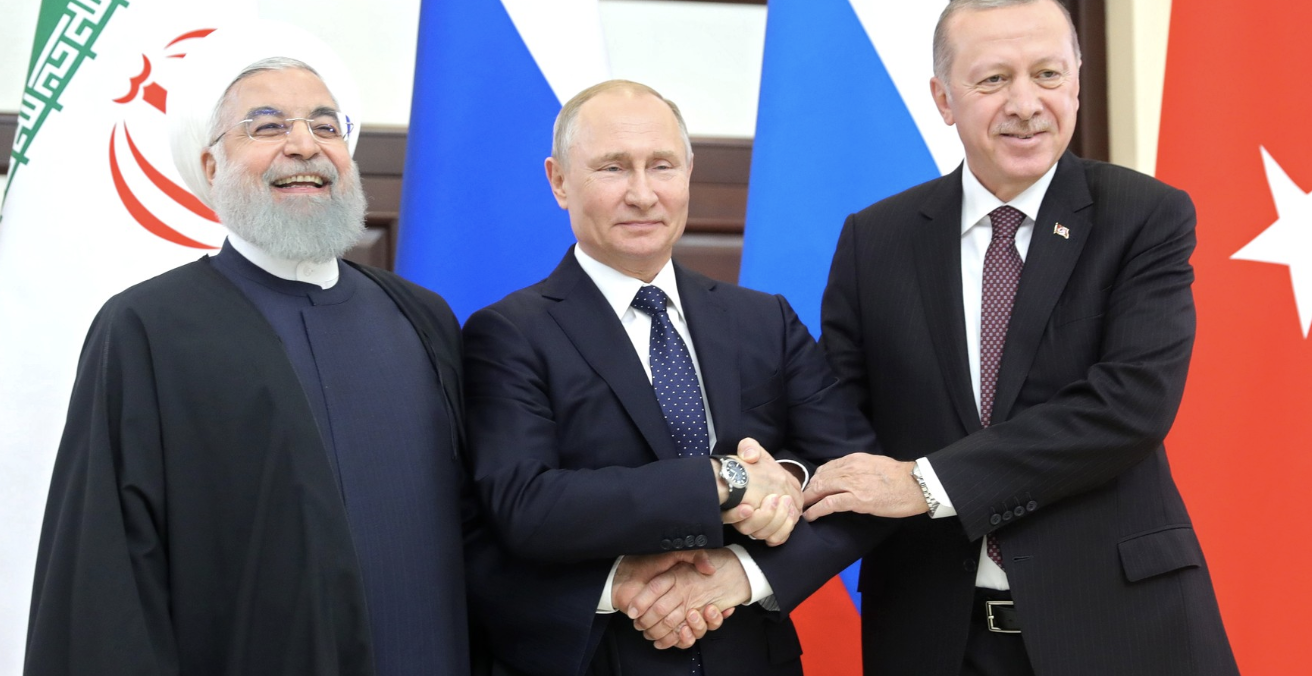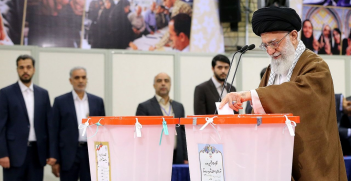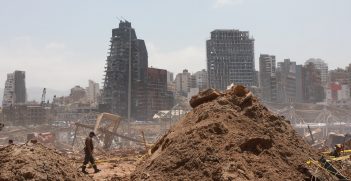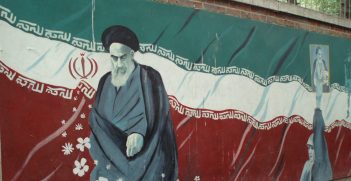Syria: Tough Negotiations Amongst External Stakeholders

As the likely outcome of Syria’s civil war increasingly favours Assad, Russia is positioning itself to be the major beneficiary. But in this turbulent region, external factors could still disrupt this trend.
My previous report on Syria described civil war developments as favouring Assad, and with the strong likelihood he would remain in government due to the significant military support he has and continues to receive from Russia, Iran and Lebanon’s Hezbollah. But the endgame will be determined by Syria’s foreign stakeholders, both pro- and anti- Assad, as they seek to shape an outcome to best protect and promote their interests.
Amongst Syria’s external stakeholders, Russia has the lead. It has two interrelated strategic interests in Syria: preserving the Assad government and using Syria to extend its power and influence in the region.
Both interests are underpinned by the pair’s bilateral military relationship. Syria provides Russia with access to naval and airbase facilities – the former at the port of Tartus and the latter at the coastal city of Latakia. As Russia’s only military facilities in the Mediterranean, they enable Moscow to project military power and political influence into Syria, the Middle East and the eastern Mediterranean.
Assad’s survival, or at least that of a pro-Russian government, is critical, therefore, to Moscow’s strategic interests.
In a regional context, Russia is seeking to exploit the growing vacuum created by diminishing regional trust of the United States. It is seeking to project a new image as a pragmatic and cooperative power in its dealings with others, free from its former Soviet-era ideology. While regional responses have been cautious, there is general acceptance that the Middle East is now legitimately within Russia’s sphere of influence. Multiple sources claim regional states are increasingly open to broader dialogue with Russia and willing to widen their relationship depending on how bilateral and regional events unfold.
Within Syria, Russia has consciously worked to showcase this new image. In addition to its military commitment, it is playing a “broker role” with the United States, Turkey, and Iran and Israel. Its aim in this is to avoid unnecessary confrontation and bloodshed and to work towards a political solution.
In its relations with the United States, this includes special communication arrangements to prevent or minimise any unintended incidents: between their respective air force assets when engaged in nearby operational missions; and on land between the Syrian armed forces and its allies and the US-backed, Kurdish-led and dominated, Syrian Democratic Forces (SDF). Arrangements have worked well, and generally, these forces have not targeted one another. Islamic State (IS) has been a common target, by the SDF east of the Euphrates river and by the Syrian armed forces to the west of the river. The Syrian armed forces other major target has been the Free Syrian Army (FSA).
With the destruction of the Islamic caliphate, the imminent defeat of those IS remnants in the SDF’s eastern area of operations, the announced withdrawal of US troops supporting and protecting the SDF, and the likelihood Assad will remain in government, Russia, the United States, Turkey and Assad are now brokering the future of the Kurds. My previous reporting suggested that subject to security guarantees from both Assad and Turkey, the Kurds will most likely agree to a similar pre-civil war situation whereby they had quasi-autonomy under the overall control of Damascus.
The United States is seeking Russian support to broker Assad’s guarantee that the Kurds can return to pre-civil war controls without victimisation. Presumably, any guarantee will need to include the Kurds agreeing, at least formally, to disband the SDF. However, it has been reported the United States will now retain some 200 troops in northeast Syria to provide continued support to the Kurds. How this might impact on negotiations remains to be seen.
The United States is also seeking guarantees from Turkey, which regards Syria’s Kurdish People’s Protection Units (YPG) – the backbone of the SDF – as a major terrorist threat because of its affiliation with Turkey’s Kurdish Workers Party (PKK), an internationally proscribed terrorist organisation. Such guarantees include YPG exclusion zones along its border with Syria.
Russia, Turkey and Iran are also attempting to broker the fate of the approximate 70,000 anti-Assad combatants now contained within Syria’s northwestern Idlib province bordering Turkey. Some 45,000 of these are members of the FSA, the others include remnants of IS and al Qaeda-affiliated extremists. Negotiations are complex. The solution process involves the United Nations on ceasefire and civilian protection provisions and a de-escalation zone in Idlib, agreed last year by Russia and Turkey. Ultimately, a mix of solutions is probable. Some may surrender and disarm, others may remain intact but relocate across the border to Turkey or to designated “safe zones” along the border within Syria, and many extremists may melt into the civilian population as sleepers to fight another day.
Turkey has some tough decisions to make. Although a member of NATO and anti-Assad, Turkey’s policies are driven by pragmatism. They will work with the United States or Russia when it is in their security interests to do so but have also been very blunt about their willingness to take whatever military action is necessary to protect their security.
Special communication channels also exist between Russia and Israel to avoid unintended incidents. In particular, Israel accidentally targeting Russian ground or air assets during its air incursions into Syria to destroy Iranian and Hezbollah weapons caches and other military equipment.
But this arrangement has raised many unanswered questions. For example, what are Israel’s motives for these strikes? Is Israel seeking to deter Iran from establishing a permanent military presence in Syria? Is Israel concerned that in the event they decide to attack Iran’s nuclear facilities, Iran could use its foothold in Syria to open up a second front against it, potentially with the help of Hezbollah and the Syrian army? Or is Israel seeking to provoke a retaliatory response from Iran, and possibly Hezbollah and Syrian armed forces, thus giving them the pretext to launch a major and highly destructive attack against the military assets of all three in Syria and southern Lebanon? If so, has Israel assessed that such an attack, and the expected rapid international intervention to impose a ceasefire agreement, would prevent the likelihood of any second front capability in the foreseeable future?
While it is in Russia’s broader strategic interests to avoid a military confrontation with Israel, their lack of military intervention to deter or prevent these Israeli attacks against their ally, raises unanswered questions. Does Russia have a “red line” that would necessitate some form of military intervention? Is Russia itself opposed to a permanent Iranian military presence because of the higher risk of a deliberate or unintended incident involving Israel that could destabilise favourable trends in Syria?
Officially, Lebanon is not involved in Syria’s civil war, as its “disassociation policy” precludes involvement in any regional conflict. In practice, there are multiple political parties and other organisations in Lebanon that are actively pro- or anti- Assad and who also support, and are supported by, various external stakeholders. The Future Movement Party to which Prime Minister Saad Hariri belongs is strongly affiliated with Saudi Arabia. But the most prominent actor is Hezbollah. Its elected politicians are members of the Lebanese government, but its battle-hardened militia – a proscribed terrorist group – is aligned with Iran and fighting in Syria in support of Assad. There is little evidence of affiliations with Israel. However, some sources in Lebanon were concerned about the outcome of any new military confrontation with Israel – fearing it may result in Lebanon losing additional territory rather than regaining that already occupied by its southern neighbour.
The pendulum is presently swinging in favour of Assad and his Russian and Iranian allies, the situation remains fragile. Enter the wild card. What if the United States does manage to force regime change in Iran, which many believe is its intention. Would that affect Iran’s commitment or ability to maintain a military presence in Syria? And could that swing the pendulum the other way?
Ian Dudgeon is a presidential associate of the AIIA. He recently visited the Middle East.
This article is published under a Creative Commons License and may be republished with attribution.





